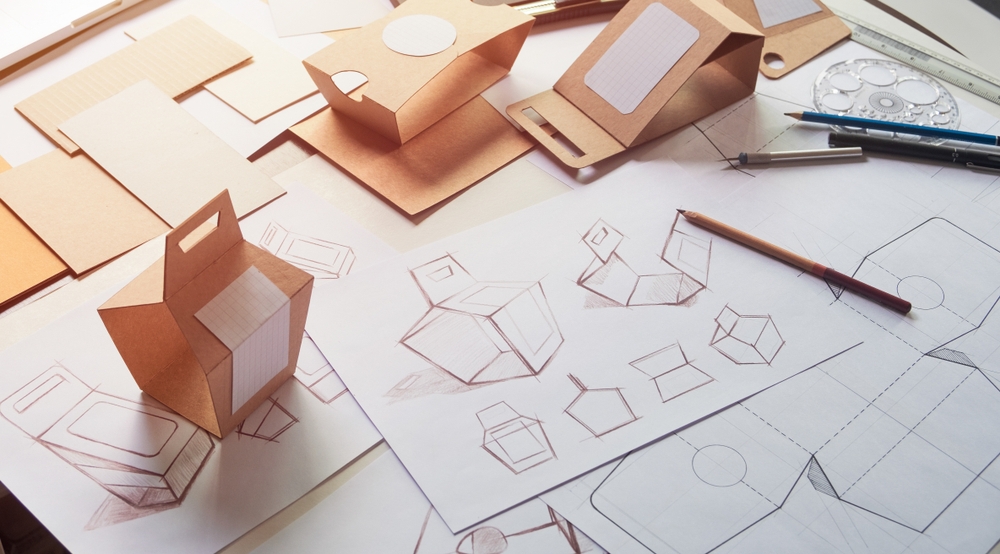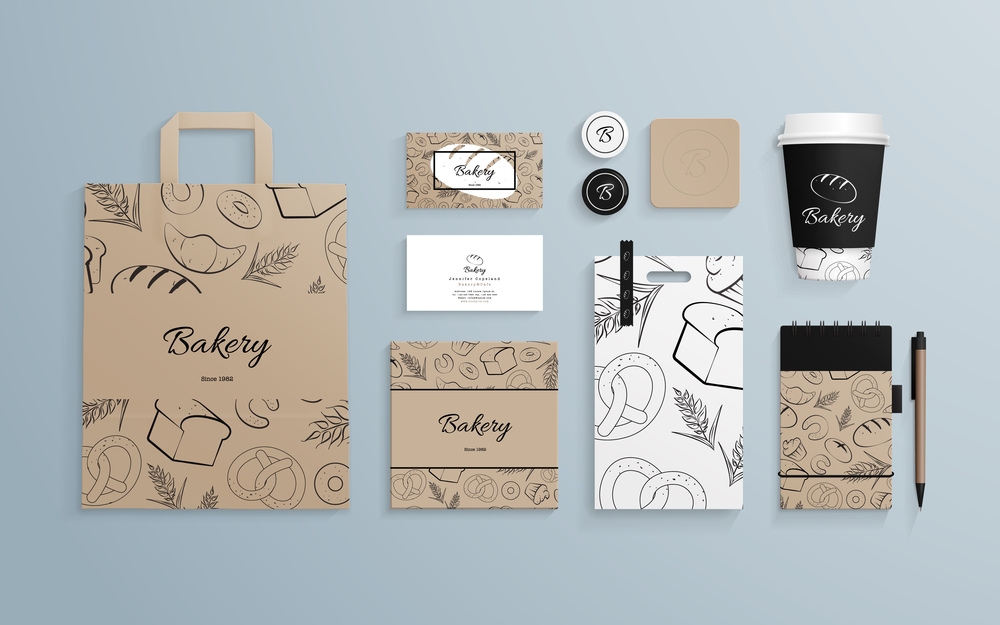Top Trends in Paper Packaging Design for Sustainable Branding
By Morten Numrich · 2. April 2024
In search🔍 of a paper packaging design that balances visual appeal with environmental responsibility?
Our article dives into the core practices you need to know, from cutting-edge trends to selecting sustainable materials, helping you design paper packaging that not only looks great but is kind to the planet too.
Key Takeaways
- Paper is the new plastic, as brands switch to stylish and sustainable paper packaging to woo eco-conscious consumers and grab attention in the competitive market.
- Packaging isn’t just a pretty face; it also needs to be functional and deliver a brand’s message loud and clear, ensuring that customers keep coming back for more.
- Coloring outside the lines is encouraged in paper packaging, with brands getting creative with sustainable materials, personalization, and knock-your-socks-off designs that pave the way for an eco-friendly future.
The Rise of Paper Packaging
 paper bag for food packaging
paper bag for food packaging
It’s no secret that consumers are developing a green thumb, with a growing desire for sustainable packaging options.
They are increasingly favoring paper over plastic, viewing it as the eco-friendly choice that doesn’t compromise on style or functionality.
Add to this the food industry’s rising demand for sustainable takeaway packaging, and it’s clear why paper packaging is gaining traction.
Brands, on the other hand, are using creative packaging design to stand out in a competitive market while also jumping on the eco-friendly bandwagon.
From sustainable retail and food product packaging to outer packaging, brands are replacing plastic and glass with paper, creating packaging that not only looks good but also saves the planet.
Key Elements of Effective Paper Packaging Design
While the rise of paper packaging might be driven by sustainability and aesthetics, there are other key elements of packaged everything that make it a powerful tool for brands.
A well-designed package is:
- a brand ambassador
- user-friendly
- a source of delightful experiences
- a clear winner in the battle of brands.
Visual Appeal
Visual appeal in creative package design is a deal maker (or breaker).
It’s what catches the eye of customers and influences their purchasing decisions, even when it comes to takeaway food and beverage packaging.
Brands use creative packaging design to make their products stand out on the shelves, employing bright colors, unique patterns, and engaging illustrations.
Think of patterns and illustrations as the life of the party.
They bring in the excitement🤩, grab attention, and leave a lasting impression on customers.
From typographic details to unique outer packaging designs, paper packaging can truly be a playground for creativity.
Functionality
Although visual appeal may initially attract customers, it is the functionality that secures their loyalty.
After all, packaging needs to protect the product and make life easier for the consumer.
This is where innovative paper-based solutions come into play, enhancing the functionality of paper packaging design and reducing plastic waste, as an alternative to traditional plastic packaging.
Additionally, the adaptability of paper packaging design enhances product customization, thereby fostering a positive consumer experience.
Whether it’s sturdy transport packaging created for ecommerce or attractive takeaway food packaging, functionality is at the heart of good paper packaging design.
Brand Messaging
Brand messaging in paper packaging design is like the brand’s wingman, hyping up its values and spreading the word about its awesomeness.
Typography, color, and imagery play a crucial role in conveying the brand’s message, catching attention, and even swaying purchasing decisions, especially when it comes to takeaway packaging.
A well-executed, brand identity strategy ensures that these elements work together seamlessly to create a cohesive and memorable experience for the consumer.
An engaging narrative, complemented by captivating visuals and texts, can transform the unboxing experience into a memorable journey reflecting the brand’s essential beliefs and aspirations.
It’s all about creating a cohesive look and enticing consumers to get involved with the product, all while promoting biodegradable packaging.
Innovative Paper Packaging Designs
 take away food noodle box
take away food noodle box
Innovation is the name of the game in paper packaging design.
Brand designers are constantly pushing the boundaries of creativity and originality, incorporating unique features or sustainable materials to stand out from the competition.
Whether it’s clean, muted colors, whimsical details, or designs that set the mood, there are countless ways to catch the eye and leave a lasting impression.
Innovative💡 paper packaging designs significantly contribute to promoting sustainability.
From refillable or reusable packaging to cutting-edge waste reduction techniques, brands are embracing sustainability in creative ways, shaping the future of packaging.
Sustainable Materials for Paper Packaging
 sustainable packaging
sustainable packaging
The rise of paper packaging has brought forth a variety range of sustainable materials, including recycled materials.
From cellulose from sources like hemp and wood to biodegradable materials like paper, cardboard, and bamboo, these materials are helping reduce the environmental impact of packaging waste.
Plant-based alternatives such as cellulose-based materials and PLA (polylactic acid) are also gaining popularity in the food industry, especially for packaging organic produce.
They’re biodegradable, renewable♻️, and can replace non-biodegradable materials like polyethylene linings, for example, making them perfect for food packaging design.
Evidently, the future of packaging materials promises to be sustainable, innovative, and eco-friendly.
Customization and Personalization in Paper Packaging Design
 Paper Packaging Design
Paper Packaging Design
Customization and personalization serve as the transformative elements that can elevate the quality of a packaging design from good to exceptional.
By offering a tailored experience, brands can create a unique connection with their customers, often incorporating interactive elements or designs that reflect individual preferences or needs.
Whether it’s strategic color choices, personalized logos and text, or unique packaging styles, brands can jazz up their packaging design by adding a touch of customization.
Leveraging technology enables brands to effortlessly tailor their packaging to their target market to increase sales, minimize packing times, and generate a thrilling unboxing experience.
The Role of Typography and Color in Paper Packaging Design
 corporate food packaging design
corporate food packaging design
Typography and color aren’t just decorative elements in paper packaging design.
They play a significant role in conveying the brand’s message and creating an emotional connection with the target audience.
The right typeface and color can communicate a brand’s personality and values, influencing how consumers perceive the company and brand.
Selecting the optimal typefaces and color palette for paper packaging design parallels the creation of a masterpiece.
It’s about selecting elements that truly reflect your brand’s vibe while ensuring legibility and attention to detail.
The right typography and color can make your packaging design as visually appealing as a masterpiece in a gallery.
Tips for Designing Sustainable Paper Packaging
Designing sustainable paper packaging can be a rewarding yet challenging endeavor. Here are several pointers to guide you through the process.
First, consider the entire lifecycle of the packaging, from production to disposal.
This will help reduce its environmental footprint and promote sustainability.
Use eco-friendly materials, such as compostable packaging and other biodegradable materials. Minimize waste by designing packaging that uses less material without compromising on functionality.
Lastly, incorporate design attributes into product packaging that promote reusability or recyclability.
These tips will not only help you design effective packaging but also contribute to a greener future.
Challenges and Solutions in Paper Packaging Design
Like any design process, a packaging design project comes with its own set of challenges.
Balancing aesthetics with functionality, meeting legal requirements, and managing production costs can often feel like a juggling act.
However, rest assured that there are strategies to overcome these obstacles and create packaging that meets your needs.
Creative problem-solving, collaboration with manufacturers, and staying informed about industry trends and regulations can help address these challenges.
Also, adopting sustainable practices can help mitigate production costs and environmental impact.
Keep in mind, each challenge presents an opportunity for innovation and growth.
The Future of Paper Packaging Design
Looking ahead, we anticipate the trends of sustainability, innovation, and personalization to persistently influence the realm of paper packaging design.
With the rise of sustainable materials and innovative box designs, we can look forward to more creative and eco-friendly packaging options.
Moreover, as consumer behavior evolves, so will packaging design.
Brands will continue to use the form of packaging as a tool to attract attention, convey information, create associations, and elicit emotions.
The future of paper packaging design promises to be eco-friendly, personalized, innovative, and thrilling!
Summary
As we wrap up this journey through the world of paper packaging design, it’s clear that sustainable, innovative, and personalized packaging is not just a trend, but a necessity.
From the rise of paper packaging to the key elements of effective design, to the future of packaging, it’s evident that paper packaging has a significant role to play in a more sustainable and creative future.
Let’s continue to push the boundaries of creativity, embrace sustainability, and design packaging that not only looks good but also does good!
Frequently Asked Questions
How do I become a food packaging designer?
To become a food packaging designer, consider pursuing degrees in Food Technology, Food Science, or related fields with modules in packaging. Good luck with your journey into the delicious world of food packaging design!
Why is paper packaging becoming more popular?
Paper packaging is becoming more popular because consumers are asking for sustainable options and brands are innovating to meet this demand. So, grab your eco-friendly paper packaging and join the trend!
What are the key elements of effective paper packaging design?
The key elements of effective paper packaging design are visual appeal, functionality, and brand messaging. So, make sure your design is eye-catching, practical, and communicates your whole idea and brand well.
What are some sustainable materials used in paper packaging?
When it comes to sustainable materials for paper packaging, recycled paper, biodegradable options, and plant-based alternatives like cellulose and PLA are top choices. So, next time you’re packaging something up, consider these eco-friendly options!
How does customization and personalization enhance packaging design?
Customization and personalization in the logo and packaging design create a unique and interactive connection with customers, reflecting individual preferences or needs. It’s like giving each customer a personal high-five!

